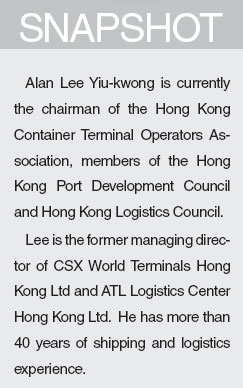How trade stacks up ... and down
Updated: 2013-09-27 07:02
(HK Edition)
|
|||||||
During the 1990s, the container boom brought huge rewards. Many players in those hey days, including terminal operators made loads of money. Hong Kong's container port had to expand exponentially to meet the rocketing demand for goods, driven largely by globalization.
Worldwide container port throughput was extremely strong during the 1990s, sustaining a compound average growth rate for the decade of 10.7 percent. Subsequent difficult economic conditions saw growth slow markedly in 2001, with global port throughput undergoing the lowest growth rates seen for many years. From year 2000 to 2004, Hong Kong's port was ranked the No 1 container port in the world.
According to Marine Department statistics, in 2001, Hong Kong port handled 17.83 million TEU, while Singapore port shifted 15.57 million TEU. Hong Kong port continued to make its mark on the world stage, handling 19.14 million TEU in 2002, 20.45 million TEU in 2003, and 21.98 million TEU in 2004.
In 2005, Singapore handled 23.19 million TEU to become the world's No 1 container port, overtaking Hong Kong. Singapore held the title for five years to 2009, until Shanghai's 29.07 million TEU beat Singapore's 28.43 million, to become the new world's No 1 spot in 2010. Shanghai has since retained the title.
Last year, Shanghai handled 32.5 million TEU, Singapore 31.6 million, Hong Kong 23.09 million, Shenzhen 22.9 million and Busan 17.03 million.
Between January and June this year, Shanghai port handled 16.34 million TEU, Singapore 15.64 million, Shenzhen 11.06 million, Hong Kong 10.71 million, and Busan an estimated 8.05 million TEU.
For Hong Kong, its been a lost decade.

(HK Edition 09/27/2013 page8)